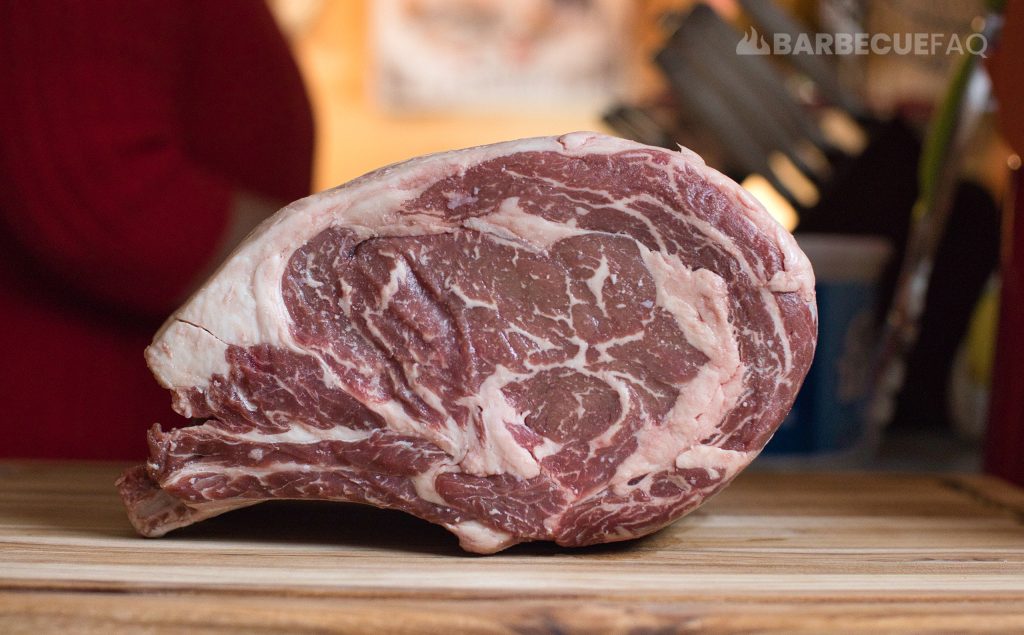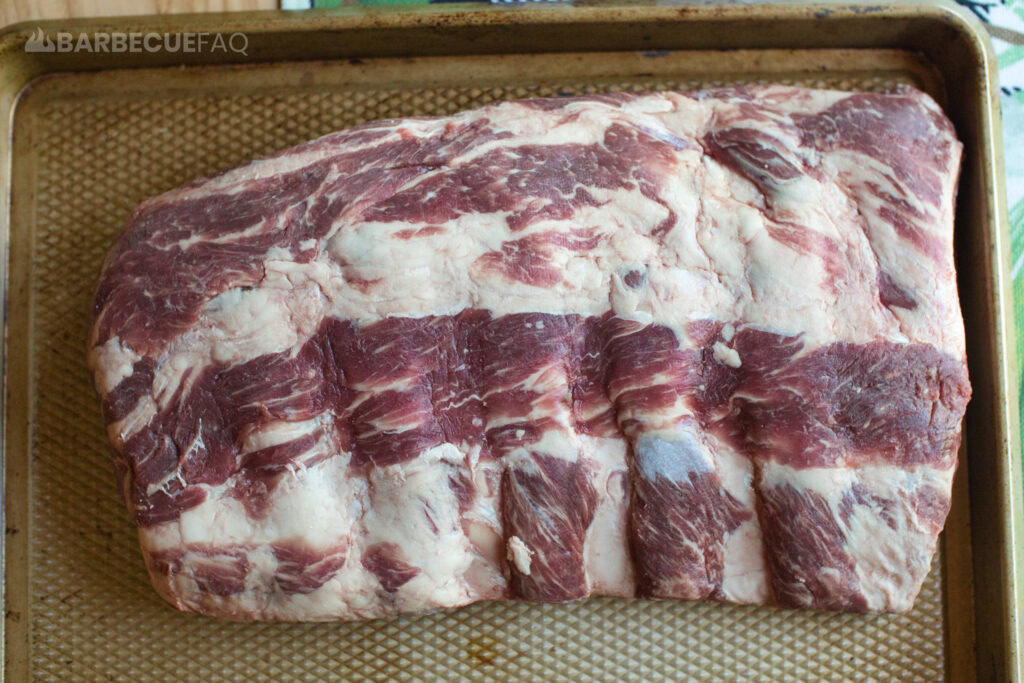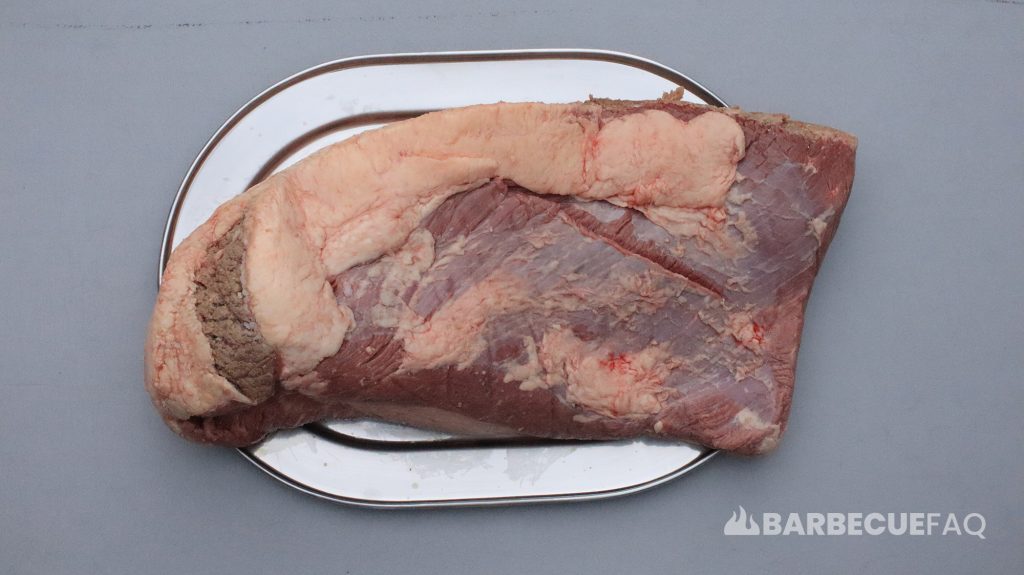Thee beef rib primal is the meat from the 6th to the 12th rib.

It is found at the forequarter of the cow, behind the chuck primal (removed at the 5th/6th rib), above the short plate, and in front of the loin (removed at the 12th/13th rib).
The rib primal offers some of the most prized cuts on the entire animal.
This fact is so true that the cross-section of the ribeye (longissimus dorsi) is analyzed at the 12th and 13th rib to determine grading for all meat on the cow.
What Sub-primal Cuts Come from the Rib Primal?
We get the following:
- Rib roast
- Beef Rib Steaks
- Ribeye cap roll
- Beef Back ribs
Prime Rib Roast or “Rib Roast” or “Standing Rib Roast”
A whole prime rib or “7-rib roast” can weigh anywhere from 14-22 lbs.
Not only is this a lot of meat, it’s also very expensive.

For this reason, Butcher’s will divide the roast into 2 smaller roasts, called a 1st and 2nd cut.
1st Cut Rib Roast:
Closer to the loin; Consists of ribs 10-12; Contains a larger “eye” muscle.
More desirable for “prime rib.”
2nd Cut Rib Roast:
Closer to the beef chuck; Consists of ribs 6-9; Less uniform, contains more connective tissues, but more fat (flavor).
More desirable for rib steaks.
Ribeye Steak
A true rib “eye” steak is just the center muscle – with the other surrounding muscles and fat removed.

Today though, “Ribeye” is a catch-all term used to refer to this type of beef steak.
As a generalization, it is either cut bone-in or boneless.
When the bone is left in, it’s colloquially called a Cowboy steak.
When the bone is long and frenched, it’s called a Tomahawk steak.
Note: While ribeye steaks are the same meat as prime rib, these cuts are cooked quite differently.
Cap of Ribeye
On every beef ribeye steak there is a cap (spinalis dorsi).
This part is also called the “deckle” or sometimes called the “calotte.”

In my opinion, it’s the single best muscle on the entire cow.
This cap muscle can sometimes be removed from the entire 7-bone rib roast to create a beef ribeye roll.
This muscle is physically rolled and held together with butcher’s twine.
Beef Back Ribs
When these ribs are separated from the prime rib, the butcher attempts to keep the knife as close to the bone as possible.
The reason for this is to maximize the weight of the ribeye steaks.

This is because ribeye steaks make butchers a lot of money and beef back ribs do not.
Beef back ribs are different from other types of beef ribs in that the meat is between the bones as apposed to on top of the bone.
You can learn more about beef ribs in this article.
Beef back ribs don’t offer much in terms of meat yield, especially after cooking where the meat shrinks. For ribeye meat though, they’re often super cheap.




